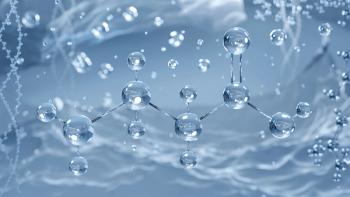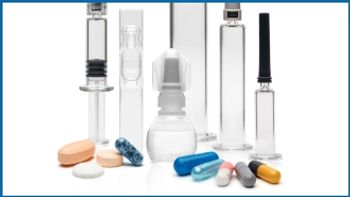
- BioPharm International-05-02-2007
- Volume 2007 Supplement
- Issue 3
Rapid High-Throughput Feed Optimization
Growth of CHO cell cultures in a shaker plate model system was demonstrated to be comparable to growth in shake flasks.
Development and optimization of growth media, feed solutions, and feed strategies is a complex project. More than 200 components (amino acids, trace metals, vitamins, growth factors, carbon sources, etc.) can be found in various commercial growth media formulations. A typical cell culture medium formulation may contain 50 to 60 individual components. Some of these may be critical for cell growth or productivity, others may be toxic at certain levels, and many may be involved in complex interactions in the same or competing pathways within the cell. Media and feed components typically are screened individually or in small combinations in shake flasks, in experiments of a few dozen shake flasks in parallel. This method significantly limits the ability to discover complex interactions among medium components.
A high-throughput medium development technology that allows the rapid development of optimized base growth media, feed solutions, and feed strategies has been developed and was used in the following study with a proprietary Chinese hamster ovary (CHO) cell line. Approximately 100 components were screened in titration experiments to select the top 16 components for feed optimization. A 16-component central composite design with axial and center points was then implemented in a shaker plate model system. Based on the productivity levels, two of the top combinations were selected for confirmation in shake flask studies. Using a high-throughput approach, we were able to increase the viable cell density and volumetric productivity from 3.5 x 106/mL and 0.3 g/L to 8.0 x 106/mL and 1.2 g/L in two experiments. This article discusses the high-throughput technology and the experimental approach.
EXPERIMENTAL APPROACH
A recombinant CHO cell line engineered to express a proprietary antibody was provided by an outside party. Cells were grown in a commercial serum-free medium with L-glutamine and insulin. Cell cultures were grown at 37°C with 5% CO2. Initially, optimal conditions were determined for the growth of CHO cells in a shaker plate model system, and it was shown that cell growth was comparable to shake flasks. A high-throughput liquid handler was used to deliver the samples to the shaker plates according to the combinations derived from a design of experiments software program. For this study, 23 amino acids and derivatives, 4 carbon sources, 10 hydrolysates, 8 lipid solutions, 21 salts, 7 trace metals, 18 vitamin solutions, and 9 other components were prepared in the serum-free medium (without L-glutamine or insulin); pH was adjusted to 7.2 ± 0.2.
Cell count and the viability of cultures in flasks were determined using trypan blue exclusion dye. Viable cell counts for the cultures in the shaker plate system were determined using a high-throughput plate-based imaging method in which a fluorescent viability stain was added, and plates were incubated and scanned using a high-throughput fluorescent microscope. Protein concentration was determined using a bead-based enzyme-linked immunosorbent assay (ELISA)-style immuno-competition assay. Streptavadin beads were prepared with a biotinylated anti-immunoglobulin G (IgG) antibody. Unknowns were competed against a Cy5-labeled IgG and read against an antibody standard.
For feed formulation development, titration experiments were performed with 100 components, from which 16 components were selected based on their impact on viable cell days, specific productivity, and prior experience. A 16-component central composite design with triplicates was performed in the shaker plate system. Shake flask studies were performed using the top two combinations based on protein productivity from the 16-component design.
Figure 1. High throughput media development strategy
RESULTS
Component Screening
Dilution series of selected feed components were performed to check for optimal concentration ranges and toxicity levels. These experiments were performed in a shaker plate system. A serial dilution was performed from 2x through 0x. The plates were incubated at 37°C, 5% CO2, and were run for 7 to 9 days. Cells were sampled on days 3, 5, 7, and 9 for cell viability assays. For one set of experiments, it took one day to set up the experiment; after incubating the plates for 7 to 9 days, significant components were selected based on cell viability and protein productivity assays. A schematic of the media development strategy is shown in Figure 1.
Table 1. Combinations from the 16-component central composite design
Sixteen-Factor Central Composite Design
Approximately 16 components were selected for feed optimization based on the cell growth curves from feed formulation experiments. A 16-component central composite design was set up in triplicates in a shaker plate system. Cells were seeded at a density of 1.85 x 106/mL, and the plates were incubated at 37°C, 5% CO2, and were run for 7 to 9 days. Cells were sampled on days 3, 5, 7, and 9 for high-throughput cell viability and protein productivity assays. Two of the top combinations from the shaker plate system were selected for shake flask studies based on protein concentration. The factorial design of some of the combinations is shown in Table 1.
Figure 2. Cell viabilities of the control, run 258, and run 179 in triplicates are shown from day 0 to day 9. The controls maintained good viability for 5 days and samples 258 and 179 maintained good viability for 7 to 8 days.
Shake Flask Studies
Shake flask studies were performed with combinations 179 and 258, as shown in Table 1, to confirm the results from the shaker plate system. These studies were performed in triplicates along with the controls. The feed components were added according to the combinations, and the controls were added with the same amount of media but no additional components. This process was followed to ensure the same volumes in all the experimental shake flasks. The initial seeding density after adding the components was 1.72 x 106/mL. Cells were sampled on each day up to 9 days. Cell viability and cell counts are shown in Figures 2 and 3. The controls reached a maximum viable cell density of 4 x 106/mL on day 5 and dropped below 2 x 106/mL with 45% viability on day 6.
Figure 3. Viable cell counts of the control, run 258, and run 179 in triplicates are shown from day 0 to day 9. The maximum viable cell count for the controls was on day 5 and for runs 179 and 258 was on day 6 and day 7, respectively.
Viable cell density for run 258 was maximal on day 7, with greater than 7 x 106/mL, and dropped to 5 x 106/mL on day 9. Run 179 had the highest viable cell density, reaching 8 x 106/mL on day 6 before dropping to 2 x 106/mL by day 9. The average protein productivity of the cells with two different feed combinations performed in shake flasks is shown in Figures 4 and 5. Figure 4 shows the average protein concentration at the time of harvest, and Figure 5 shows the daily cumulative average protein concentration. At viable cell densities correlating with cell harvest conditions, the average protein concentration was 0.3 g/L for the control, 0.9 g/L for run 258, and 1.2 g/L for run 179. The protein productivity of samples 258 and 179 was three to four times greater than the control.
Figure 4. The figure shown here is the average protein concentration of triplicate samples in g/L. Control and runs 179 and 258 were compared when culture viability dropped below 50%. The error bars indicate ±1 standard deviation.
CONCLUSIONS
Growth of CHO cell cultures in a shaker plate model system was shown to be comparable to growth in shake flasks. This model system enabled the use of automated liquid handling and plate-based assay techniques to be combined with design of experiments to create a high-throughput platform for medium and feed development. To develop an optimized feed formulation, 100 cell culture medium components were screened and tested in 16-factor central composite design experiments. The results of the top two feed formulations were confirmed in shake flasks to increase productivity three to four times, up to 1.2 g/L. Each experiment took one day to set up and up to nine days to execute; thus, a media development program of this scope can be conducted by one researcher in approximately one month.
Figure 5. Cumulative average protein productivity of the triplicate control samples and the 179 and 258 run triplicate samples on day 3, day 5, day 6, day 8, and day 9.
KANVASRI JONNALAGADDA is a senior research associate at Xcellerex, Inc., Marlborough, MA, 508.480.9235,
Articles in this issue
over 18 years ago
Disposable Bioreactors Based on Wave Agitation Technologyover 18 years ago
Advances in Animal-Free Manufacturing of Biopharmaceuticalsover 18 years ago
Applying Fusion Protein Technology to E. coliNewsletter
Stay at the forefront of biopharmaceutical innovation—subscribe to BioPharm International for expert insights on drug development, manufacturing, compliance, and more.





